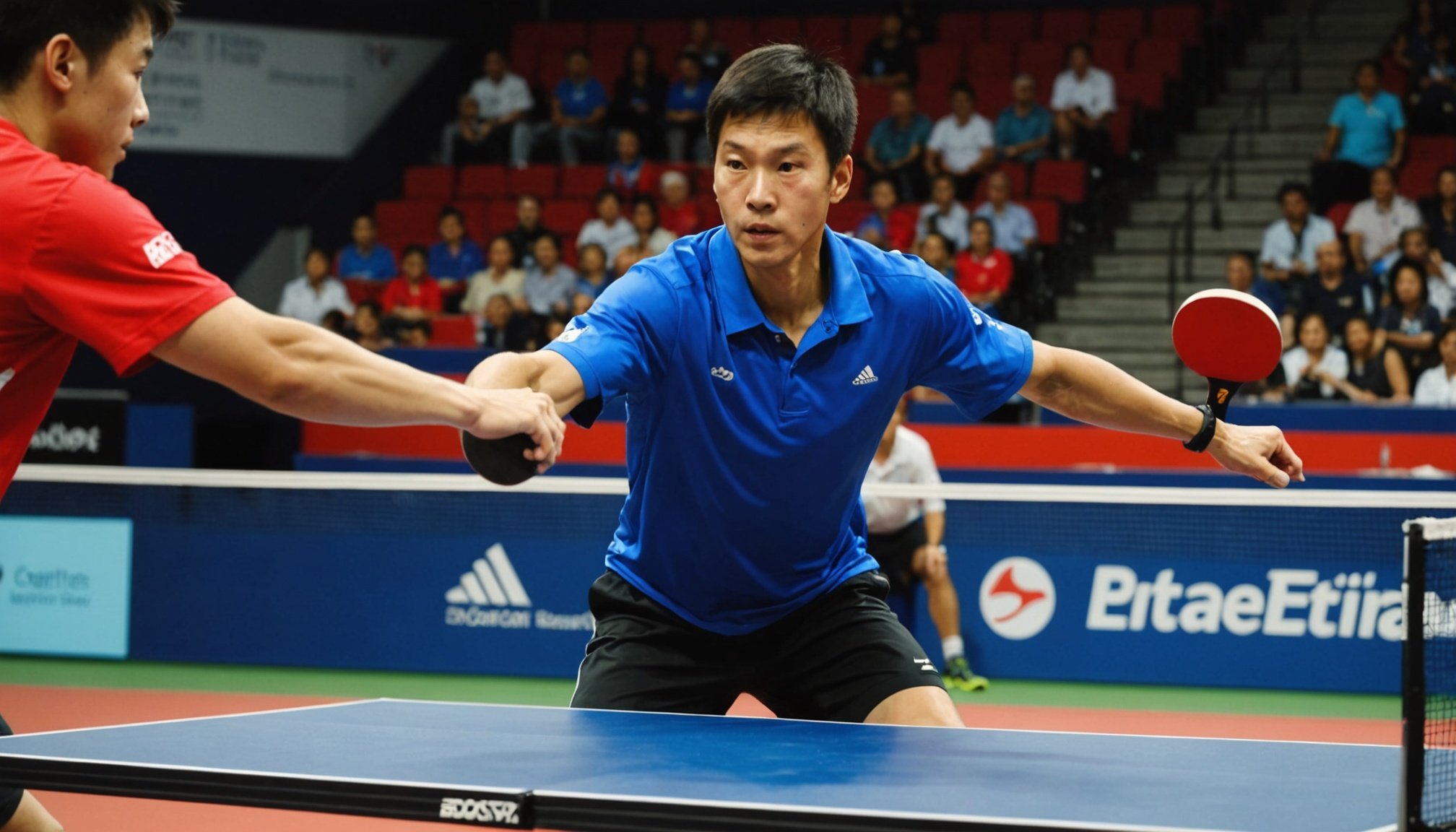Understanding Agility in Table Tennis
Agility in table tennis refers to the ability to rapidly change direction and efficiently reposition oneself to respond to the ball and opponent’s actions. This skill is paramount as it enables players to cover the table competently, optimising their chances to return the ball accurately and strategically.
The importance of agility in table tennis cannot be overstated; it directly impacts a player’s performance by enhancing their capacity to react to fast-paced rallies. Particularly, agility allows players to transition smoothly between offensive and defensive manoeuvres, maintaining control over the game dynamics.
Also to read : Ultimate Guide to Caring for Lawn Bowls Gear: Tips for Peak Performance
Several key physical attributes contribute to agility in table tennis. These include:
- Quick reflexes: Essential for immediate response to high-speed plays.
- Flexibility: Enables players to reach and hit the ball from varied angles and positions.
- Core strength: Supports stabilisation and controlled body movement during rapid exchanges.
Agility training offers numerous benefits, applicable to players across all experience levels. Notably, it improves reaction time, enabling players to anticipate and react faster to their opponent’s strategies. Enhanced agility also leads to more effective footwork, reducing the risk of injuries while promoting overall athletic performance. By focusing on agility, table tennis players can build a solid foundation for growth and competitive success.
Also to see : Ultimate Post-Polo Recovery Strategies: Maximizing Athletic Performance after Competition
Essential Agility Exercises
Improving agility is crucial for excelling in table tennis. The following exercises help players enhance their footwork, speed, and power.
Lateral Shuffles
Lateral shuffles are fundamental for mastering footwork in table tennis. To perform them correctly, maintain a low stance with knees slightly bent and shuffle side-to-side without crossing your feet. This helps improve lateral movement, a key aspect in responding to fast-paced rallies. For beginners, start slowly to perfect the form. As skill levels advance, incorporate resistance bands or ankle weights for added challenge.
Cone Drills
Cone drills are excellent for honing speed and directional change. Begin by arranging cones in a zigzag pattern. The objective is to weave through them quickly, focusing on swift stops and starts. Beginners should start with wider spacing and gradually decrease it as their agility improves. Advanced players can increase difficulty by adding ball dribbling or integrating different patterns to simulate in-game movements.
Plyometric Box Jumps
Plyometric box jumps enhance explosive power and footwork agility. Start with a stable box or platform and jump onto it from a standing position, ensuring a soft landing. This exercise strengthens leg muscles, improving jump response. Always prioritize technique—land with flexed knees to absorb impact. Adjust the box height according to individual fitness levels to safely build strength.
Ladder Drills
Ladder drills are versatile for boosting coordination and speed. Using an agility ladder, practice common patterns like the in-and-out or icky shuffle. These exercises promote quick feet and precise foot placement, essential in table tennis. To keep training sessions fun and engaging, experiment with different sequences or introduce competitive timed challenges.
Incorporating Agility Training into Your Routine
Adding agility workouts into your training regimen requires thoughtful scheduling to maximise performance enhancement. Craft a weekly agility training schedule that aligns with your goals and existing commitments. This could mean dedicating specific days or blocks of time to focus on exercises that boost agility, such as ladder drills or cone drills.
Striking a balance between agility training and skill practice is vital. Your routine should ensure that you’re not overloading any single muscle group, which can lead to fatigue or injury. One effective strategy is to alternate days of high-intensity agility workouts with days of skill-specific practice. This prevents burnout and keeps your training varied and engaging.
Incorporating ample rest and recovery time is also essential within your training framework. Without proper recovery, the risk of injury increases, which can significantly derail progress. Schedule at least one rest day per week, and consider integrating active recovery activities like stretching or yoga to maintain flexibility and prevent soreness.
These components together create a balanced and effective approach to incorporate agility training, paving the way for improved athletic performance.
Visual Aids and Resources
Training table tennis effectively requires various resources to improve skills and technique. Let’s explore the tools available to enhance your practice sessions and learning process.
Video Demonstrations
Watching exercise videos provides valuable insights into table tennis techniques and strategies. Here are a few tips to get the most out of video demonstrations: observe the player’s footwork, grip, and strokes. It’s crucial to complement videos with personal practice by trying to mimic the movements in real life. Patience and consistency are key to mastering these techniques.
Printable Workout Guides
Creating your workout training guides is invaluable for tracking progress over time. To develop an effective guide, structure it to include specific exercises, repetitions, and goals. Regular self-assessment is necessary to track improvements and refine techniques. Remember, consistency and self-awareness are fundamental in achieving your table tennis objectives.
Online Community and Support
Joining an online community for table tennis enthusiasts offers several advantages. Interaction with other players provides a platform for sharing tips, experiences, and encouragement. These communities often provide access to forums and platforms where you can seek advice and share success stories. Engaging with others fosters motivation and may uncover new resources for improving your game. Remember, learning is enhanced when experiences are shared.






